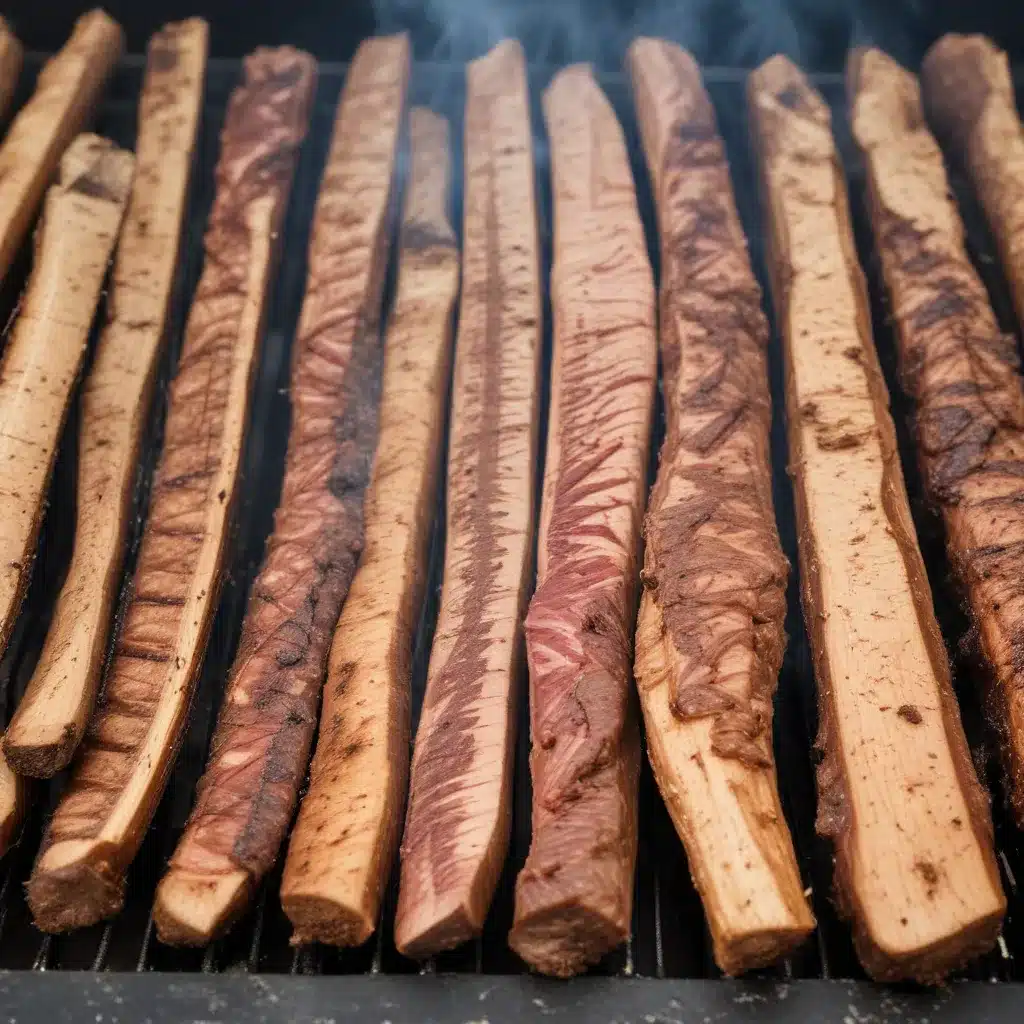
Mastering the Art of Wood Selection: An Experienced Pitmaster’s Perspective
As an experienced barbecue pitmaster, I’ve spent countless hours perfecting the art of smoking meats. One of the most crucial elements in achieving that perfect, mouthwatering flavor is the choice of wood. The type of wood you select can make all the difference between a mediocre smoke and a masterpiece worthy of any barbecue competition.
Let me share with you the insights I’ve gained over the years, guiding you through the nuances of wood selection and how to create the ultimate smoky experience for your guests.
Unlocking the Secrets of Wood Flavor Profiles
Each type of wood has its unique flavor profile, and understanding these differences is key to elevating your barbecue game. Think of it like a painter’s palette – you need to carefully select the right colors to create your masterpiece.
Maple Wood: Considered by many pitmasters, including myself, as the gold standard for smoking steak, maple wood offers a sweet and mild smokiness that perfectly complements the natural beef flavor. Its honey-like notes provide a subtle complexity that never overpowers the meat.
Cherry Wood: This fruit wood imparts a delicate, fruity essence that can enhance the savory profile of steak. I often use it when smoking bavette or flank steaks, as the slight sweetness helps to balance the bolder flavors.
Apple Wood: Renowned for its use in smoking chicken, apple wood also works beautifully with steak, lending a gentle, almost floral smokiness that’s perfect for those who prefer a lighter touch of flavor.
Oak Wood: As a versatile all-rounder, oak wood provides a medium-intensity smoke that works well with a wide range of meats, including steak. Its consistency and slow-burning properties make it a popular choice among seasoned pitmasters.
Hickory Wood: Delivering a robust, bacon-like taste, hickory wood is ideal for enhancing the natural meatiness of steak. However, use it with caution, as its strong flavor can easily overpower more delicate cuts if not balanced properly.
Experimenting with different wood combinations can also yield incredible results. For instance, blending cherry and oak or hickory and maple can create unique and complex flavor profiles that will have your guests raving.
Choosing the Right Wood for the Job
Now that you have a better understanding of the various wood flavors, let’s discuss how to select the perfect wood for your specific smoking needs.
For Beginners or Mild Smoke Preference: If you’re new to smoking or prefer a more subtle smoky flavor, I recommend starting with apple, maple, or cherry wood. These milder options will allow the natural beef flavor to shine while providing a pleasant background note of smoke.
For Experienced Pitmasters or Bold Smoke Enthusiasts: As you gain more experience, you can venture into woods with stronger profiles, such as oak or hickory. These bold flavors can stand up to longer smoking times and heavier cuts of steak, like ribeyes or brisket.
Selecting the Right Form: When it comes to the physical form of the wood, you have a few options to consider. Wood chips are great for shorter smoking sessions or when using a gas grill, as they provide a quick burst of smoke. Wood chunks, on the other hand, are ideal for longer smokes on charcoal grills, as they burn slower and more evenly. Pellets are the preferred choice for pellet grills, as they feed directly into the heating element, creating a consistent smoke throughout the cooking process.
Perfecting the Smoking Technique
Mastering the art of smoking steak doesn’t just come down to the wood selection – the smoking technique itself plays a crucial role. Here are a few tips to help you achieve the perfect smoky steak every time:
Temperature Control: Maintaining a consistent temperature in your smoker or grill is essential for even cooking and the development of a beautiful smoke ring. Aim for a smoking temperature between 225°F and 250°F for the best results.
Smoke Timing: The duration of the smoke can greatly impact the final flavor. As a general guideline, plan to smoke your steak for about 1-2 hours, depending on the thickness of the cut. This will allow the smoke to infuse the meat without overpowering it.
Basting and Mopping: Regularly basting or mopping your steak with a flavorful liquid, such as a mixture of beef broth and apple cider vinegar, can help to enhance the smoky notes and keep the meat moist during the long cooking process.
Resting and Slicing: Once your steak has reached the desired level of doneness, be sure to let it rest for 5-10 minutes before slicing. This allows the juices to redistribute throughout the meat, resulting in a more tender and flavorful dining experience.
Experimenting and Finding Your Signature Smoke
The beauty of barbecue is that there’s no one-size-fits-all approach. The journey of discovering your signature smoke is a personal one, filled with experimentation and a little bit of trial and error.
Don’t be afraid to step out of your comfort zone and try new wood combinations or smoking techniques. That’s how we pitmasters continue to push the boundaries of what’s possible in the world of barbecue.
And remember, the most important ingredient in any great barbecue is passion. When you approach your craft with enthusiasm and a willingness to learn, the results will speak for themselves.
So, fire up your smoker, grab a few different types of wood, and get ready to embark on a flavor-filled adventure. I can’t wait to hear about the incredible creations you’ll bring to the table.

